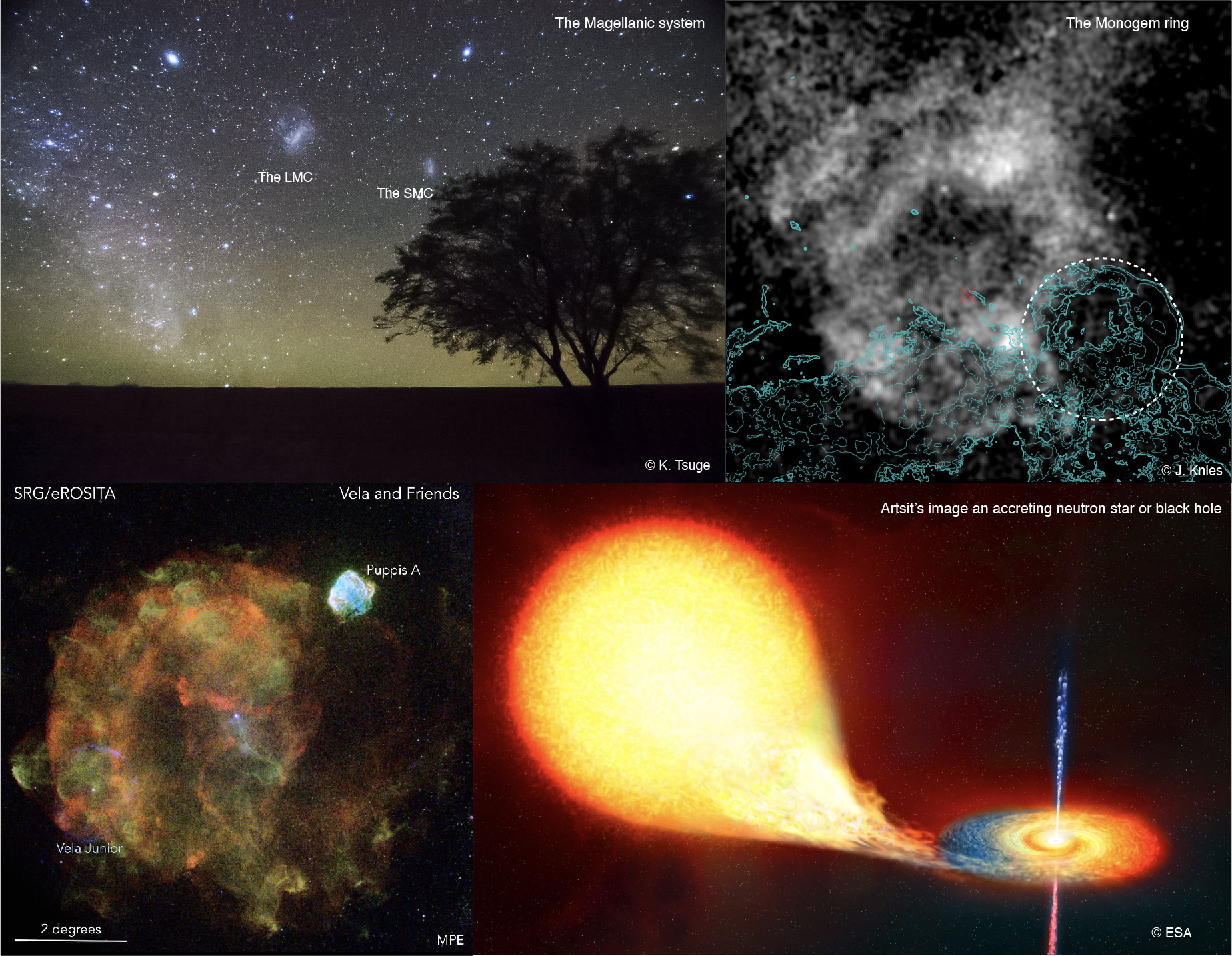The eRO-STEP (The eROSITA View of Stellar Endpoints)
The eRO-STEP is a research unit coordinated between the core institutes of the German eROSITA consortium. We study the graveyard of stellar evolution in our Milky Way and the nearby Universe using eROSITA.
During the first funding period (2021-2024), we have started with pilot projects on very bright sources or source populations in the Milky Way and the Magellanic Clouds. We have studied calibration and other technical issues, instrumental and X-ray background, etc. and developed analysis routines. In the ongoing second funding period (2024-2027), we are extending our study to fainter or more complex sources and source populations, to investigate their impact on their galactic environments.
The “extended ROentgen Survey with an Imaging Telescope Array” (eROSITA) is the next generation of imaging X-ray telescopes. It was launched onboard the “Spektrum-Röntgen-Gamma” (SRG) satellite on 13th July, 2019 from Baikonur, Kazakhstan, and reached its designated orbit around the Lagrange point 2 (L2) in October 2019. Its primary mission is to map the hot and energetic X-ray universe in the energy range ~ 0.2-10.0 keV.
For more information on eROSITA, please visit the official website.
Key questions
- What is the nature of the diffuse X-ray emission in our Galaxy? How much is the contribution of unresolved point sources vs. that of the truly diffuse emission?
- What are the fraction, composition, and physical properties of the hot plasma in the interstellar medium? How do particles gain relativistic energies?
- What is the supernova rate in our Galaxy and in the Magellanic Clouds? What is the population of the different SNR types? How is their evolution related to the interstellar environment? What is the effect of chemical enrichment through SNRs?
- How do compact objects and their close binary systems evolve? How do the magnetic fields in compact objects form and decay? How do the spin and the accretion mechanisms change?
- What is the number of stellar-mass BHs in our Galaxy? How do BHs accrete matter in binaries or in isolation?
Projects
The eRO-STEP research unit is divided into 7 different projects:
P1: Bubbles, Diffuse Emission → Q1, Q2, Q3
P2: Supernova Remnants → Q1, Q2, Q3
P3: Cataclysmic Variables → Q1, Q4
P4: Isolated Neutron Stars → Q3, Q4
P5: Accreting Neutron Stars/Black Holes → Q3, Q4, Q5
P6: Transient Objects (discontinued after first funding period) → Q4, Q5
P7: Source populations (introduced in second funding period) → Q3, Q4, Q5

Institutes








